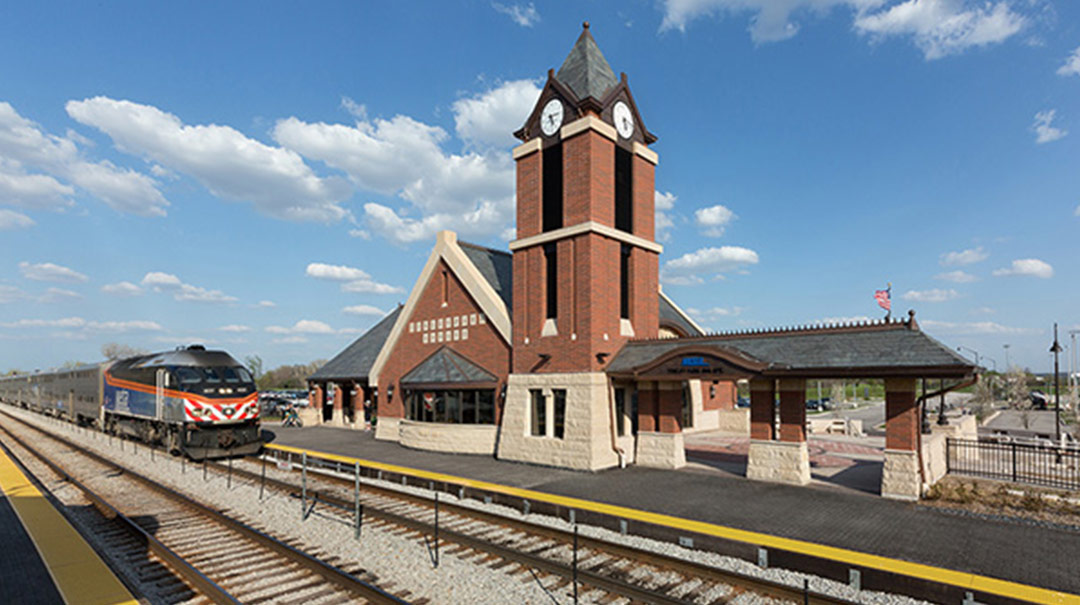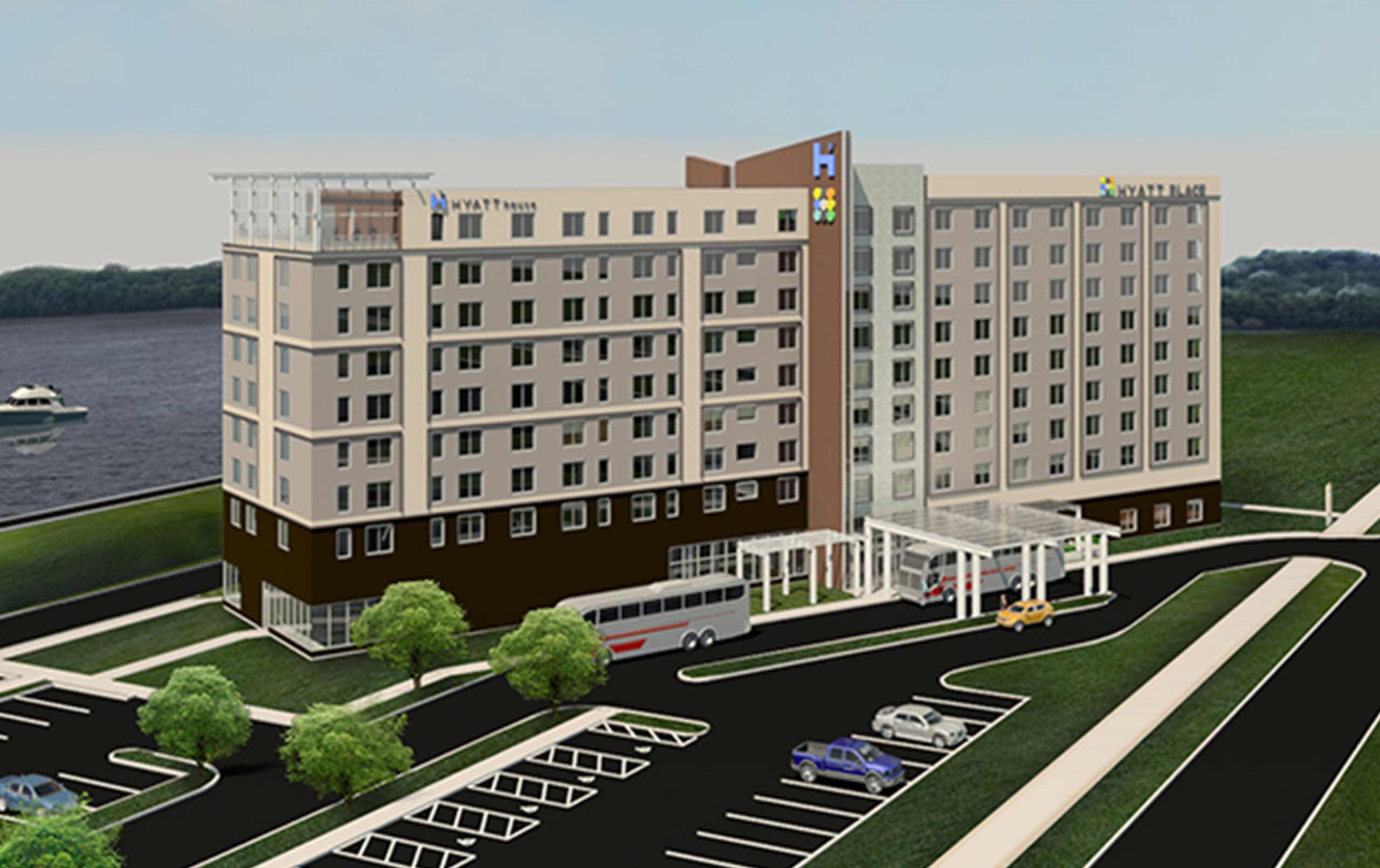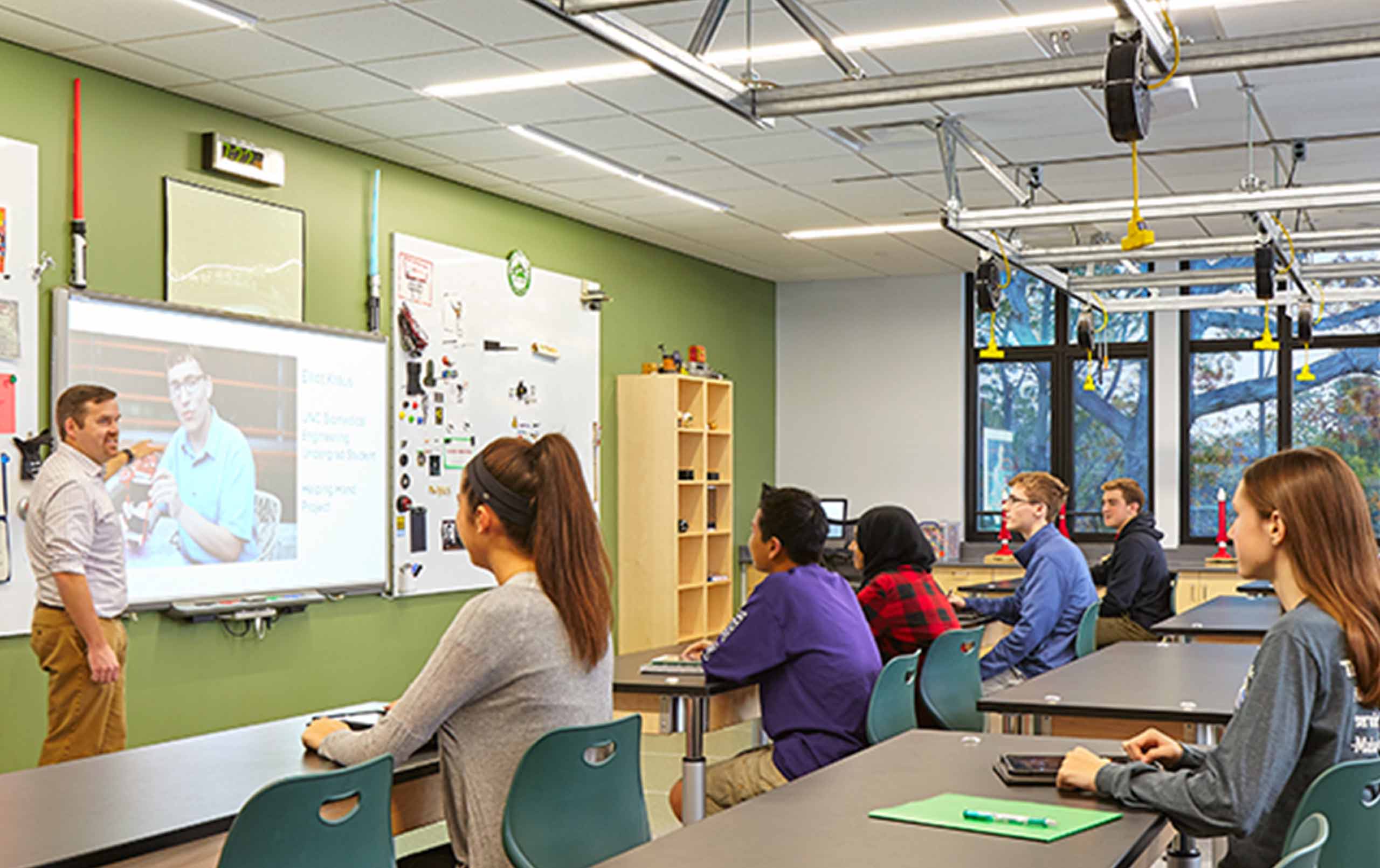
Community-supported projects relieve overcrowding, modernize science department, and preserve style of 94-year-old high school
Visitors to Glenbard West High School’s classroom addition might be surprised at something they see outside: sitting amid the self-sustaining vegetation on one rooftop garden is a metal construction beam. Closer inspection reveals teacher and student signatures on that beam.
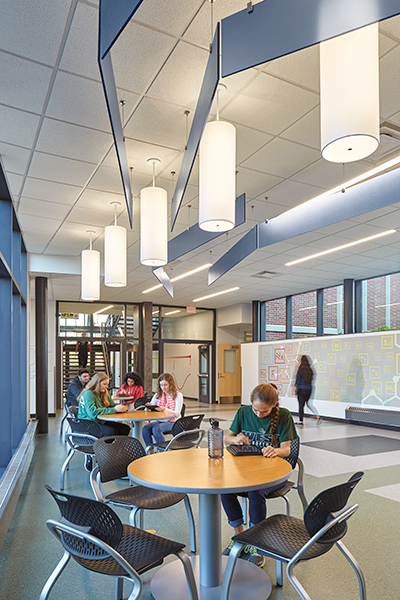
Typically, such “ceremonial beams” are placed into the structure and therefore hidden. But after getting the signatures in spring of 2015, Glenbard West leaders decided to display the beam as a symbol of the spirit of cooperation that drove the next stage of their 94-year-old school.
The 26,000-square-foot science addition, designed by Legat Architects and built by Walsh Construction, relieves overcrowding, improves internal traffic flow, modernizes the science department, and creates more spaces that respond to the needs of today’s students . . . all while respecting the Collegiate Gothic style that earned the school its nickname: “The Castle on the Hill.” Construction finished on time and more than $180,000 under budget.
Glenbard West Principal Dr. Peter Monaghan said, “It’s an amazing piece of architecture that blends the architectural traditions of Glenbard West with a new, state-of-the-art learning environment.”
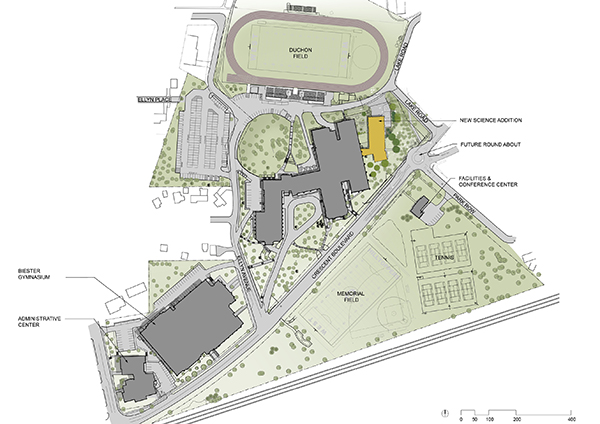
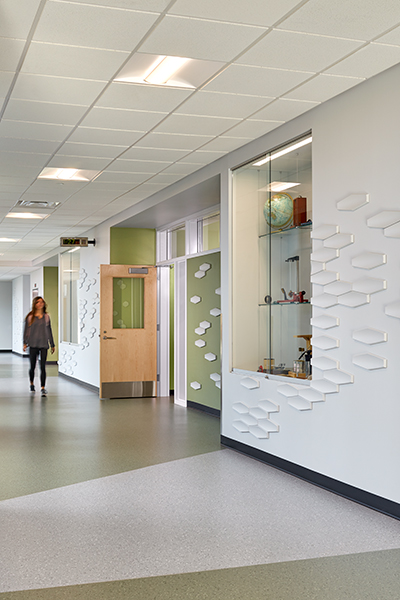
Chris McClain, Glenbard Township High School District 87 Assistant Superintendent for Finance and Operations, said, “Of the district’s four high schools, Glenbard West has consistently been the one with the highest enrollment increases.”
The school, built in 1922, had its last major addition in 1951 and a smaller addition in 1963. At one point in the ‘80s, 1,600 students attended Glenbard West. The year before the addition, enrollment exceeded 2,300. That’s 700 more students . . . in the same amount of space.
The construction work also includes a new receiving garage, repurposing of old labs into larger classrooms, and an overhaul of the school’s mechanical system that not only brings air conditioning to the entire school, but is also on track to save the district $24,000 a year in operations costs.
Additionally, the project provides more opportunities for students with disabilities. For instance, areas that were once inaccessible to students in wheelchairs are now reachable via a new elevator.
The project started with a district-wide master facilities plan completed in 2011. District leaders and Legat engaged students, staff, and community members to create a facilities roadmap for the next 20 years of growth at the district’s four high schools. Based on that plan, the work at Glenbard West is funded in part from a $35 million no tax rate increase referendum that the community approved in March of 2014 for upgrades at all four high schools.
Mary Ozog, vice president of the board of education, said, “We’re grateful to the community for supporting the 2014 referendum. Without that seed money, we wouldn’t be able to do all the work at Glenbard West and our three other high schools.”
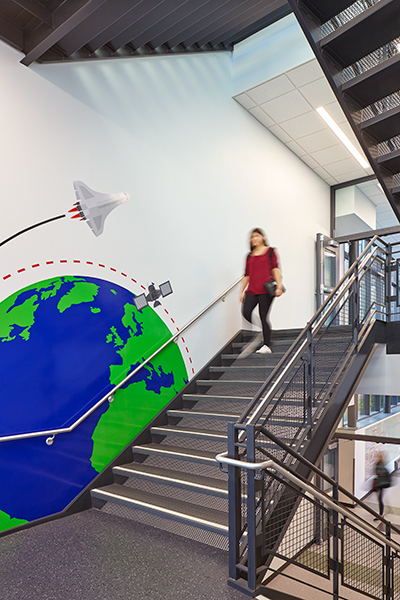
United Science
For years, science labs at Glenbard West were overcrowded and not supportive of modern instructional methods. Additionally, labs and departmental staff were scattered throughout the school.
The expansion centralizes the department and brings eight new advanced labs (four chemistry, four physics) and a shared office. Among the lab components are magnetic boards with “ghost grids,” tables that adjust for experiments, smartboards, and a ceiling system with retractable power reels and a metal grid for hanging experiments. Labs also have dual-shade systems for partial- or full-room darkening.
Dr. David Larson, Glenbard District 87 superintendent, said, “The community is very impressed by these state-of-the-art science labs configured with all of the most current features.”
Sean Byrne, science department chairman, added, “The design of the labs allows everything from cross-curricular collaboration and student-driven projects to research and one-on-one instruction.”
The addition also enhances Glenbard West’s visual arts curriculum with a daylight-filled photography room, a digital editing room, and a traditional dark room to process film. An arts courtyard accessible from classrooms gives students an outdoor area to sculpt, sketch, or paint.
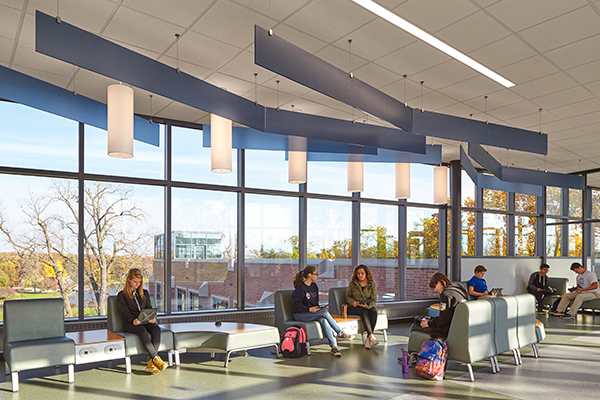
A Bridge to Collaboration and Autonomy
“Education doesn’t start or stop when you walk into a classroom,” said Byrne. “We wanted to be sure that we had spaces that encouraged student interaction beyond the classroom.”
One feature that achieves this goal is the four-story glass bridge that connects the addition to the existing structure. On each floor within the bridge, light-filled spaces called “collaboration nodes” encourage students to interact with each other and with teachers from nearby offices. The nodes offer comfortable seating and access to technology, as well as views of the campus’s athletic fields, Lake Ellyn, and the trees beyond.
“The addition creates an atmosphere that is less regimented and allows for more autonomy with young people,” said Monaghan. “It gives students more freedom for when and where they learn.”
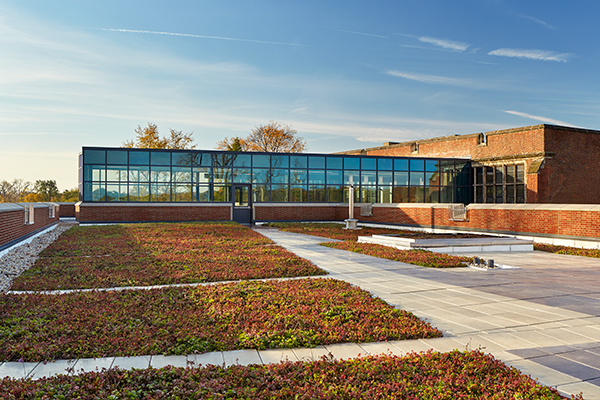
Green Roof Connects the Dots
The green roof that tops the bridge has maintenance-free native vegetation that reduces rainwater runoff and helps keep the school cooler in summer. Science teachers use the vegetation to support lessons, while students with higher functioning cognitive disabilities manage an herb garden. Classes on the roof can also access solar panels that generate energy for parts of the addition.
Monaghan said, “The green roof allows our students to connect the dots and see how science works in the real world.”
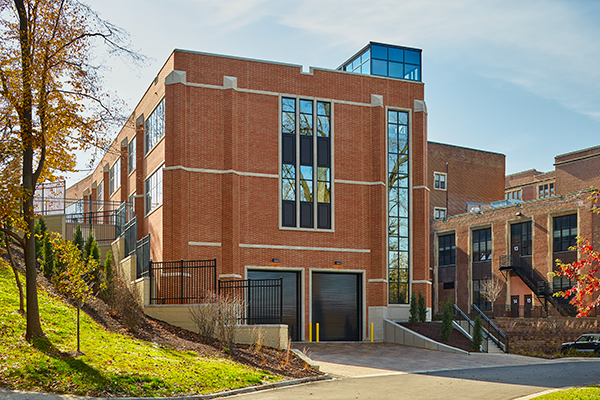
More Efficient Operations
Last year, Glenbard West maintenance personnel had to load garbage on a truck and then drive it to Dumpsters visible from a parking lot. Today, a new receiving area at the back of the school allows staff to wheel garbage directly to screened Dumpsters. The area also includes a loading dock for materials coming to or leaving the building.
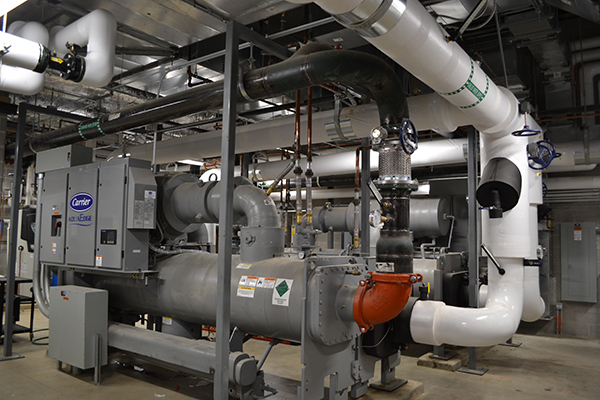
A new mechanical system will help the school reduce operations expenses to the tune of $24,000 annually. After neighbors expressed concern about generator/HVAC system noise levels, the district and Legat located the equipment in a new mechanical room.
“The Glenbard community really deserves kudos for this,” said Patrick Brosnan, President/CEO of Legat. “If the referendum hadn’t passed, the work would have been phased and some of that equipment would have ended up on top of the building.”
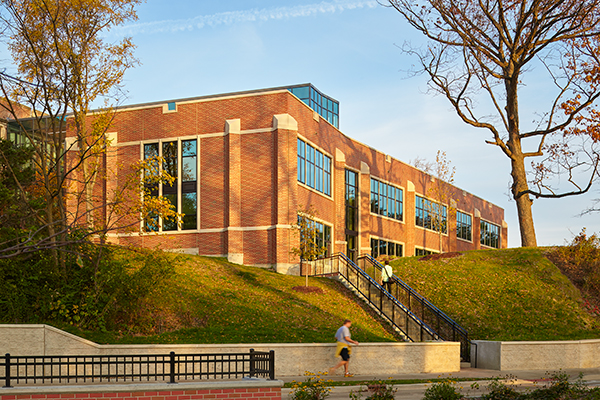
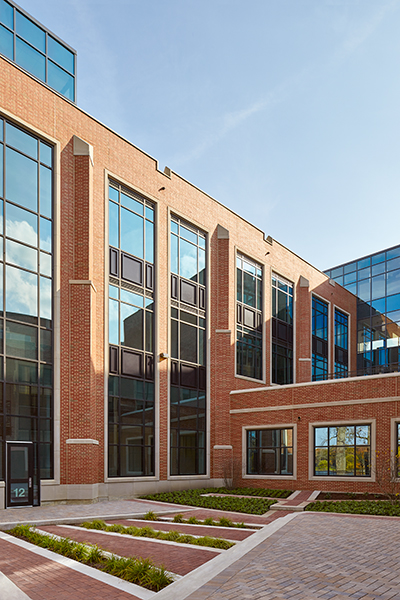
A Tribute to “The Castle on the Hill”
The Collegiate Gothic-style architecture of “The Castle on the Hill” gives it a special place in the hearts of many community members. One key design challenge involved honoring that connection and traditional aesthetic, while balancing with the building’s function as a leading-edge science facility.
The Legat team selected materials to complement, but not copy the existing façade materials. Examples include Flemish brick patterned and color-blended to harmonize with the school, cast stone (i.e., compressed concrete masonry) tinted to replicate the original limestone color, and black mullions within classroom windows.
McClain said, “We’re proud of the work that Legat did with the design because it’s respectful of the historical nature of the campus, but it also provides some contemporary touches.”
Steve Blye, senior design director at Legat, explained one of those contemporary touches.
“Whereas the piers on the original structure are stepped and perpendicular, on the addition we designed them on a diagonal to catch sunlight and cast shadows at a different angle while reflecting the angular corners on the existing school. Additionally, the new two-sided (versus original three-sided) piers use less material and therefore save costs.”
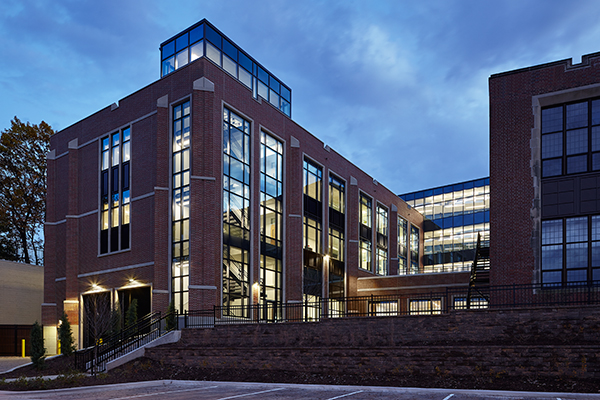
It Comes Down to Community
In 2011, the theme that drove the Glenbard Township High School District 87 facilities master plan was “quality schools = quality communities.”
“Our community recognizes the value of investing in education,” said Monaghan, “and this three-story wing, along with the HVAC renovations, is a symbol of that commitment.”
Though the signatures on that metal construction beam are limited, the voice of the Glenbard community — past, present, and future — resonates in every beam within the addition.
Contact us to learn more about preK-12 school design or comment below to share your thoughts on this post.
Images © Craig Dugan Photography.
